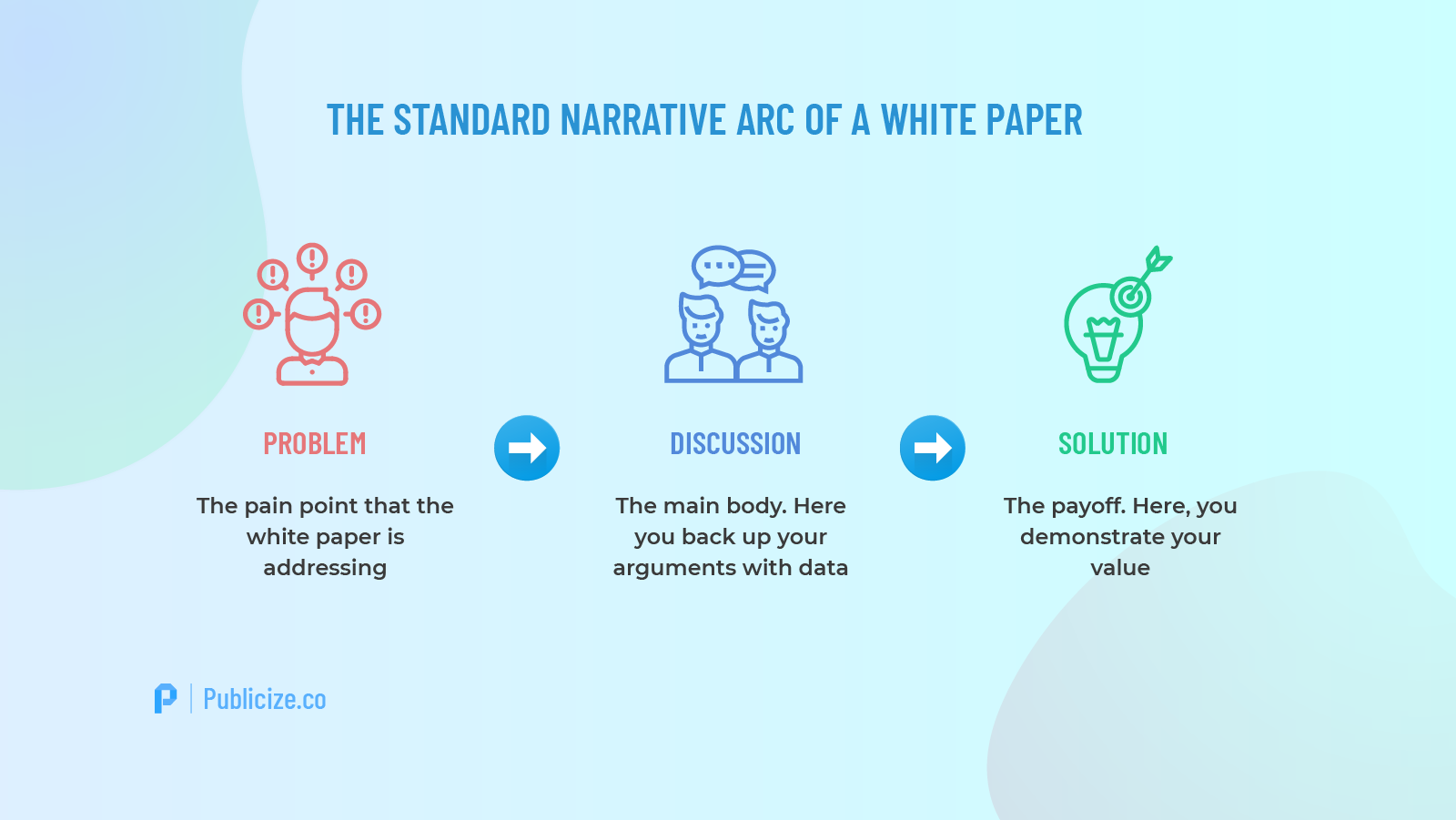What comes to your mind when you hear the phrase ‘white paper’?
Toilet roll? Printers? Surrender?
In the PR world, when most people hear the term ‘white paper’ one word comes to mind: effort.
There’s no getting away from it – a white paper is not the easiest piece of content to produce. Firstly, they’re long in length. And if that wasn’t enough, they also require the writer to trapeze the line of writing an educational document with a sales intent without sounding too salesy.
However, like most things that require a lot of effort, the payoff is worth it. White papers can be huge for your startup.
Not convinced? We’re gonna twist your arm with these four reasons why your startup should write a white paper:
1. A white paper helps to build your thought leadership
Thought leadership has become a PR buzz term over the past few years. However, it’s something that people can struggle to define.
So to clear up confusion, here’s the definition we go by:
Thought leadership is a form of content marketing, where you leverage your industry knowledge and experience to answer the biggest questions and solve the most common bugbears of your target audience.
Why is it important?
Well, thought leadership forms the foundation of trust between you and your target audience. Furthermore, startups often struggle with credibility in the early stages. Therefore, building credibility through leadership is very useful when you’re taking your first steps.
Although thought leadership can be built via ANY form of earned media win, white papers are especially good for this.
How do white papers help build your thought leadership?
The intent to write a white paper usually stems from addressing a well-known problem that has plagued your industry. Furthermore, it may seem obvious, but the problem your white paper presents should be one your company can solve with its products or services, as the below infographic shows.

White papers also help boost your thought-leadership credentials by keeping your audience aware of the products, services, and issues relevant to their lives.
The impact of publishing a white paper that provides an in-depth analysis of these topics can be significant. In the future, you and your startup’s resources may become the natural go-to for your customers when they’re looking for answers.
2. White papers are great for lead generation
Studies have shown that white papers are a tried and tested way of collecting information from customers and buyers. In a recent survey, more than half of the companies who produced white papers stated that they are a ‘valuable’ or ‘extremely valuable’ source of leads.
Why is this?
An in-depth, high-value piece of content such as a white paper can be used as gated content, where users are required to provide personal data to access.
And white papers are one of the most effective forms of gated content. In fact, 76% of buyers are willing to share personal information in exchange for white papers – 13% more than those who do so in exchange for an EBook.
How can your startup begin producing gated content?
You can set this up by making a lead capture form to require certain mandatory information from the user before they can download your white paper.
These are the most common mandatory information fields found in lead capture forms:
- First and last name
- Company name
- Country
- Phone number
Whatever details you obtain from this download, they go directly into your sales funnel.
3. They allow you to learn more about your audience
As we just covered, white papers are primarily treated as gated content and lead capture forms are the aim of the gated content game.
Yes, your startup can initially use the influx of customer data to target new business wins. However, you can also use it to learn who your target audience is.
This will largely depend on what information you ask for in the form. However, you could learn some valuable insights from those who sign up for your white paper.
This could include:
- Age
- Gender
- Location
- Industry
Of course, it would be wise to do this in conjunction with social media analytics tools and google analytics. However, the information you gather can help you understand who’s interested in your product or service, which informs the type of content you create in the future.
4. A white paper acts as a keystone document
Yes, we’re not denying that white papers take more resources and time than your average piece of content.
However, white papers can save your startup a lot of time when deciding on the kind of content you want to produce in the future. Not only because they help you learn more about your audience, but because a white paper is considered to be a keystone document.
What do we mean by that?
Well, a keystone document is a large piece of content which your company can refer back to and possibly spin out into other smaller pieces of content, such as:
- Guest articles
- Podcasts
- Blog posts
- Special pitches
Although a word of caution, this is best done if the white paper is behind a sign-up form and not crawlable by Google. You don’t want to duplicate or thinly “redress” existing content that’s accessible to Google’s crawlers, as you could have issues with duplicate content.
A white paper can also be used as a great resource for the press. Much like a media kit, a white paper can be easily referred to by different journalists when trying to learn more about your product or service, or your mission and vision.
So work hard, not smart my friends, and leverage your white paper again and again for maximum value. (OK, enough with the cliches)
Yes, white papers require a lot of research and take longer to write than most pieces of content. But there are multiple reasons why a startup should write a white paper, as outlined here. With that in mind, it’s time to wave your white flag and for your startup to surrender to the idea of writing a white paper.






